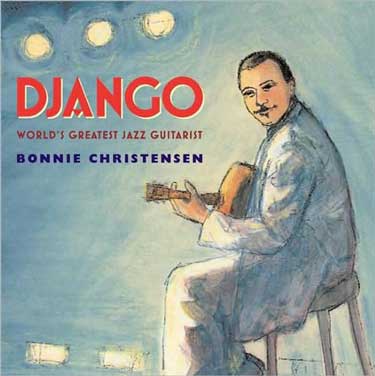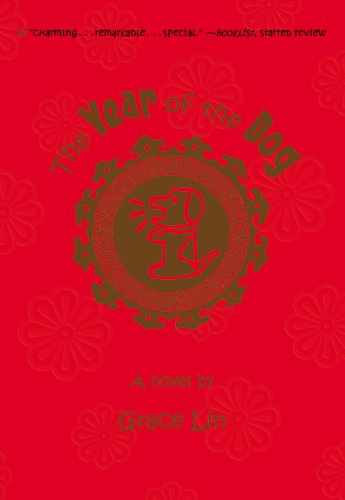
A. BIBLIOGRAPHY
Christensen, Bonnie. 2009. DJANGO: WORLD’S GREATEST JAZZ GUITARIST. New York, NY: Roaring Brook Press. ISBN 1596434228.
B. PLOT SUMMARY
Born into extreme poverty in a gypsy encampment, Django Reinhardt overcame tremendous obstacles, including debilitating injury, to become the world’s most acclaimed jazz guitarist.
C. CRITICAL ANALYSIS (INCLUDLING CULTURAL MARKERS)
An interesting read about a persistent man who overcame his injury. Students will most likely not gravitate towards this book due to the muted illustrations and slow pace. If read aloud and discussed, the main character will look like a hero because of his courage and strong will. The writing style is very short and choppy. “Hard life everywhere. Work at this. Work at that. Hard life.” More description might have added to the overall story. Christensen’s illustrations are detailed. When Django is injured in the hospital room, the illustrations change to gray and black. This conveys the mood very well.
Django’s injury is depicted in a very caring and realistic way. When Django begins to play again, he is pitied by others. “Looks of pity cross the circle. Left hand’s useless. What’s he thinking?” Although others see his injury as a burden, Django continues to persevere. In addition to his injury, Django is also a gypsy. Gypsy life is discussed and pictures of tents and camping out are common. The illustrations show women wearing head scarves and dresses and the men in caps and pants. When the gypsies dance, the women carry tambourines and puffy sleeves on their shirts. This attire seems appropriate for gypsies. The artist takes special care to make the individuals have unique characteristics and not all look the same.
Christensen completes the tale of the guitarist's success with an author's note, a brief paragraph on the Roma people, and a bibliography/discography.
D. REVIEW EXCERPTS
2010 ALA Schneider Award Winner for Young Children’s Books
“Starred Review. …In stark colors, Christensen conveys the hopelessness of the musician's situation, trapped in his iron-railed hospital bed. He refused to give up, though, and the next page finds him rapt, guitar clasped to his chest, eyes closed in the effort of drawing forth music again. She includes enough detail to give perspective, but it is her lush paintings that so effectively give life to the man's effervescent charm and determined courage. This inspiring account of an individual overcoming tragedy and adversity should find a wide audience.” SCHOOL LIBRARY JOURNAL
“*Starred Review* … Christensen supports the inspirational story with rich, vibrant paintings that capture the texture and tone of the landscapes in Django’s life: burnt oranges and various shades of brown bring the Gypsy campfires to vivid life, while bright blues shimmering under the sharp yellows of stage footlights depict the electricity of the guitarist in performance. The art steals the show here, but the text works fine, too, describing the essence of Django’s story without overwhelming middle-graders with too much detail.” BOOKLIST
E. CONNECTIONS
Discuss how the illustrations change when Django is injured.
Learn more about the Roma culture and Django Reinhardt.











